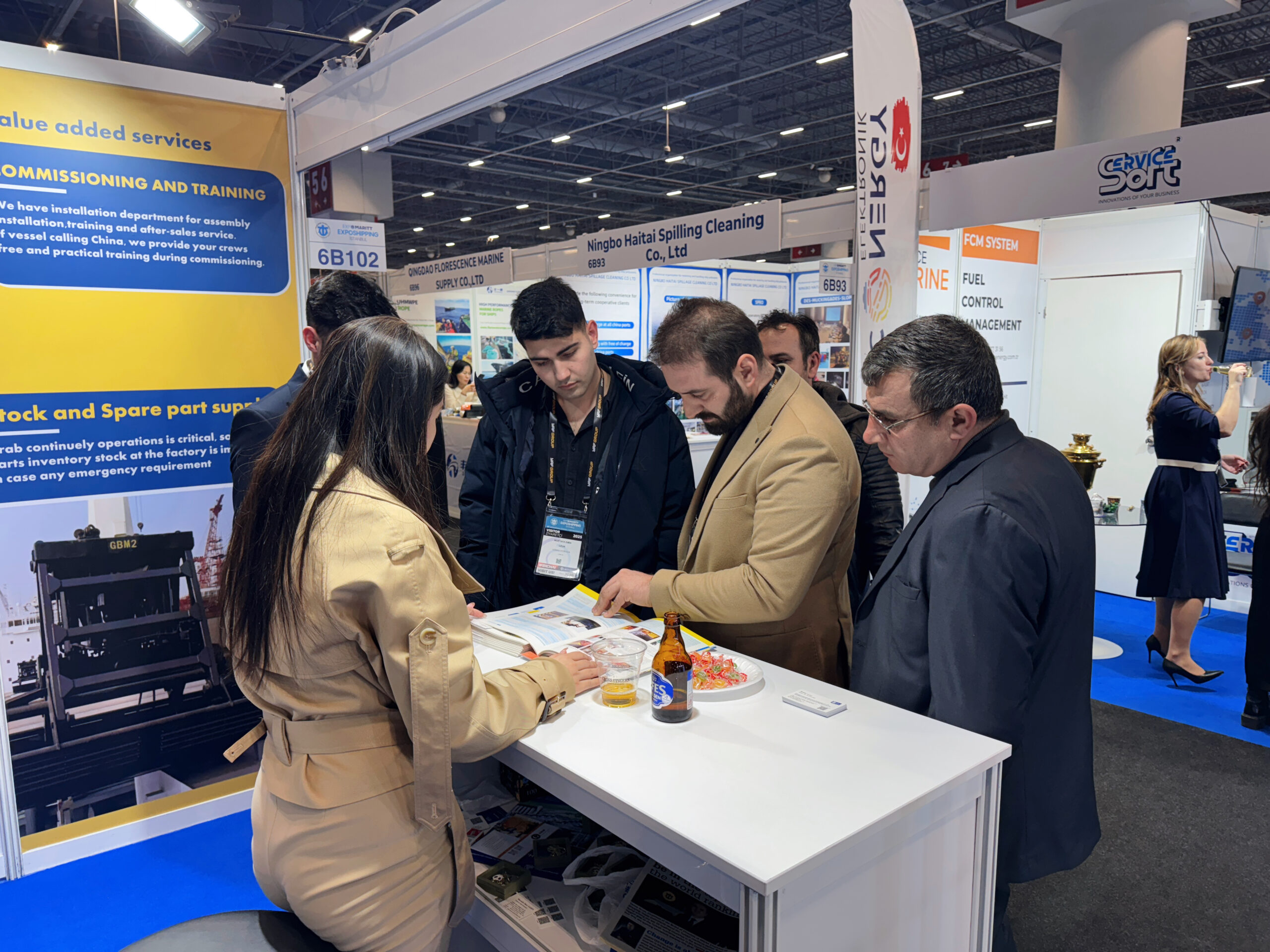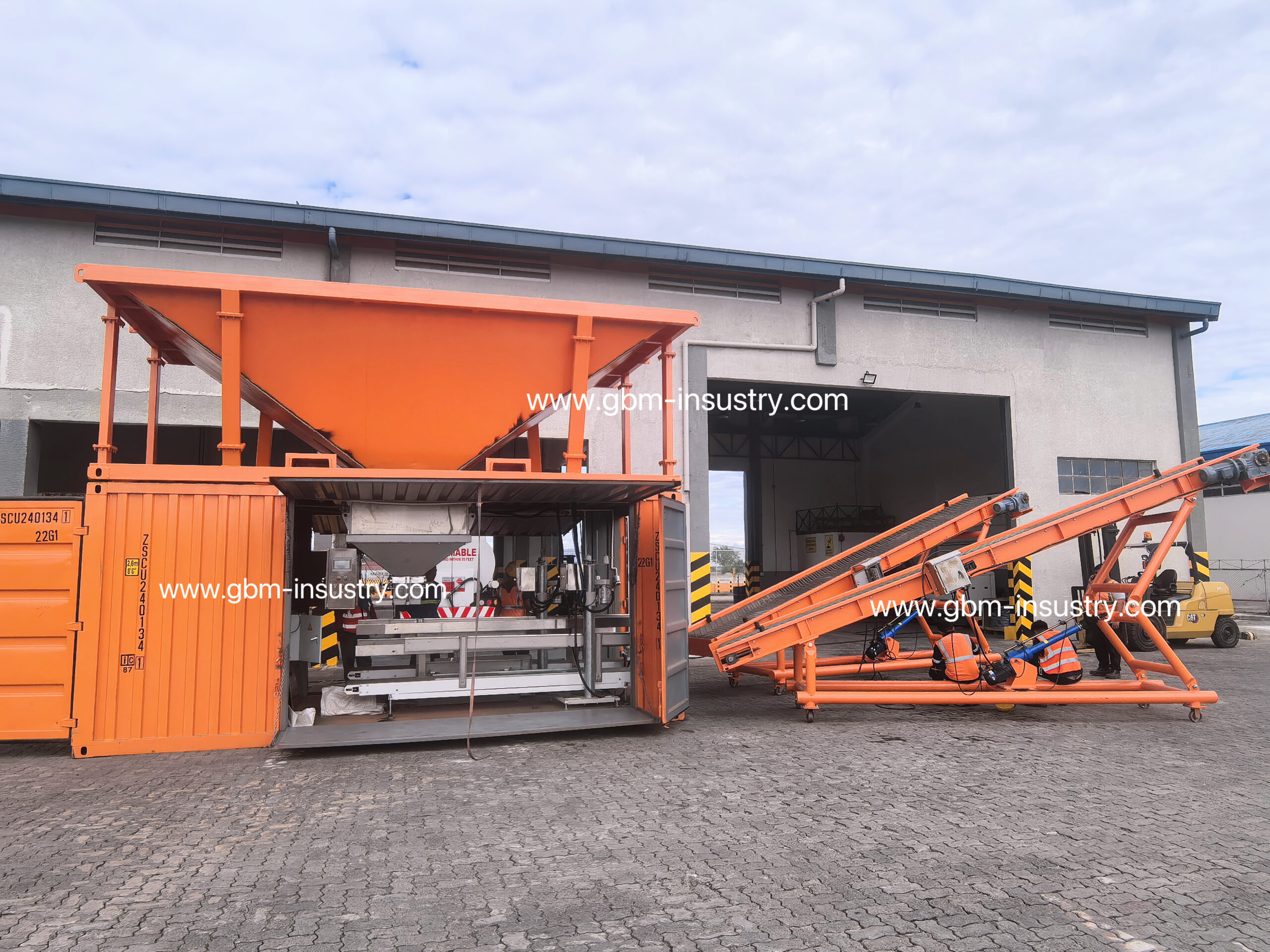In recent years, with the intensifying competition in cargo throughput among ports, domestic ports have been striving to grow rapidly and strengthen their competitiveness by pursuing economies of scale. According to reports, the three major container port clusters in northern, eastern, and southern China are expected to add at least 50 dedicated deep-water berths for containers in the coming years.
Port construction is inseparable from the matched yard facilities and mechanical equipment. With the significant improvement in the loading and unloading efficiency of front-line port equipment in recent years, how to scientifically, reasonably, and sustainably plan and develop yards, particularly the selection and configuration of yard mechanical equipment, has become a critical issue for port leaders at all levels and technical personnel from various fields.
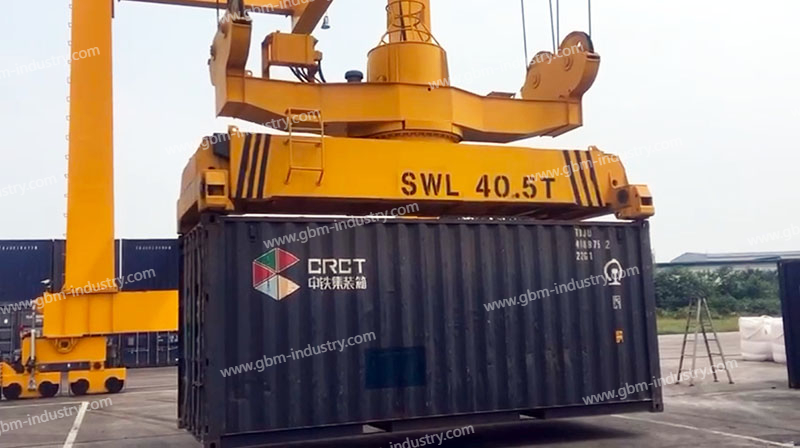
GBM telescopic rotation container spreader for yard crane application
Currently, in the selection of equipment for conventional container yards, there are primarily two types: rubber-tyred gantry cranes (RTGs) and rail-mounted gantry cranes (RMG). Among these, RTGs have become the preferred choice for cargo handling solutions in large and medium-sized terminal yards. In fact, both types of equipment have their own advantages and disadvantages, and should be selected based on the actual conditions of the terminal, rather than blindly following trends. Therefore, it is necessary to analyses them in detail to provide more accurate references for the selection of terminal yard equipment.
Under the same track gauge and speed conditions, since RMG does not require a generator set but instead uses a cable reel device, while RTG must be equipped with a generator set and wastewater treatment system, the overall procurement cost of the two types is not significantly different, with RTG being slightly lower.
RMG can use more wheels, resulting in lower wheel pressure compared to the current 8-wheel tire-mounted cranes. However, it requires the construction of a substation, laying of power cables, and installation of the entire track system, leading to higher infrastructure investment costs for the yard. RTG has lower requirements for yard construction and generally does not require additional supporting facilities. During the initial phase of port construction, tyre-mounted cranes are typically used for container yard operations.
Many domestic container terminals have accumulated rich experience in the use of rubber tire gantry cranes (RTG). Now, combining the use of rail mounted gantry cranes (RMG), we will compare and analyze the two types of machines in several aspects.
External dimensions
RMG has a span of up to 40 m (12 rows of containers) or more. Under the conditions of the terminal yard’s load-bearing capacity, it can stack 7–8 containers high, and can be designed with extensions as needed for actual operations; RTGs, however, are constrained by factors such as tire load capacity, so their overall dimensions cannot be significantly increased. The span is now a standard figure, typically 23.47 m (6-container width with 1 lane), with a stacking height not exceeding 18.23 m (stacking 5 containers high and passing 6 containers), and generally without extensions. As can be seen, in terms of space utilization in the yard, rail-mounted cranes are superior to tire-mounted cranes.
Cost Analysis
Equipment Cost
Under the same track gauge and speed conditions, since RMG does not require a generator set but uses a cable reel device; RTG must be equipped with a generator set and wastewater treatment equipment. Therefore, the overall purchase price of the two models is not significantly different, with RMG being slightly lower. RMG can use more wheels, resulting in lower wheel pressure compared to the current 8-wheel rubber-tyred gantry crane; however, it requires the construction of a substation, laying of power cables, and installation of the entire track system, leading to higher infrastructure investment costs for the yard. RTG has lower requirements for yard construction and generally does not require additional supporting facilities. In the initial phase of port construction, rubber-tyred gantry cranes are typically used for container yards.
Operating Costs
RMG rail-mounted cranes are powered by the grid, environmentally friendly, pollution-free, and have low operating costs; RTGs are driven by diesel-powered generators. With current high oil prices and an upward trend in the long term, additional environmental protection equipment is required to treat pollutants emitted by generators. Additionally, during container waiting periods, generators operate in idle mode, continuously consuming fuel. According to statistics from a container company at a certain port, during a 24-hour yard operation, the generator idles for 12 hours. The energy consumption per TEU is as follows: conventional tire-mounted gantry cranes (stacking 5, passing 6, lifting capacity 40 tons) consume 2–2.2 liters of diesel, while electric gantry cranes consume 2–3 kW·h of electricity. Under current market fuel and electricity prices, the unit container energy consumption cost of RMG decreases by approximately 70%, and the use of rail-mounted cranes offers significant operational cost advantages.
Maintenance Costs
RMG uses cable reels for power supply, and cable reel manufacturers typically provide a 3–5-year warranty for trouble-free operation. RTG uses diesel engines, which have a higher failure rate and require regular maintenance and major repairs. Assuming an RTG engine operates an average of 20 hours per day, after 200 hours of operation, the engine must undergo maintenance once. Taking the Cummins KTA19-G4 engine currently used by a container company as an example, excluding the replacement of parts prone to failure, the maintenance and major overhaul costs over a three-year period amount to approximately 300,000 yuan.
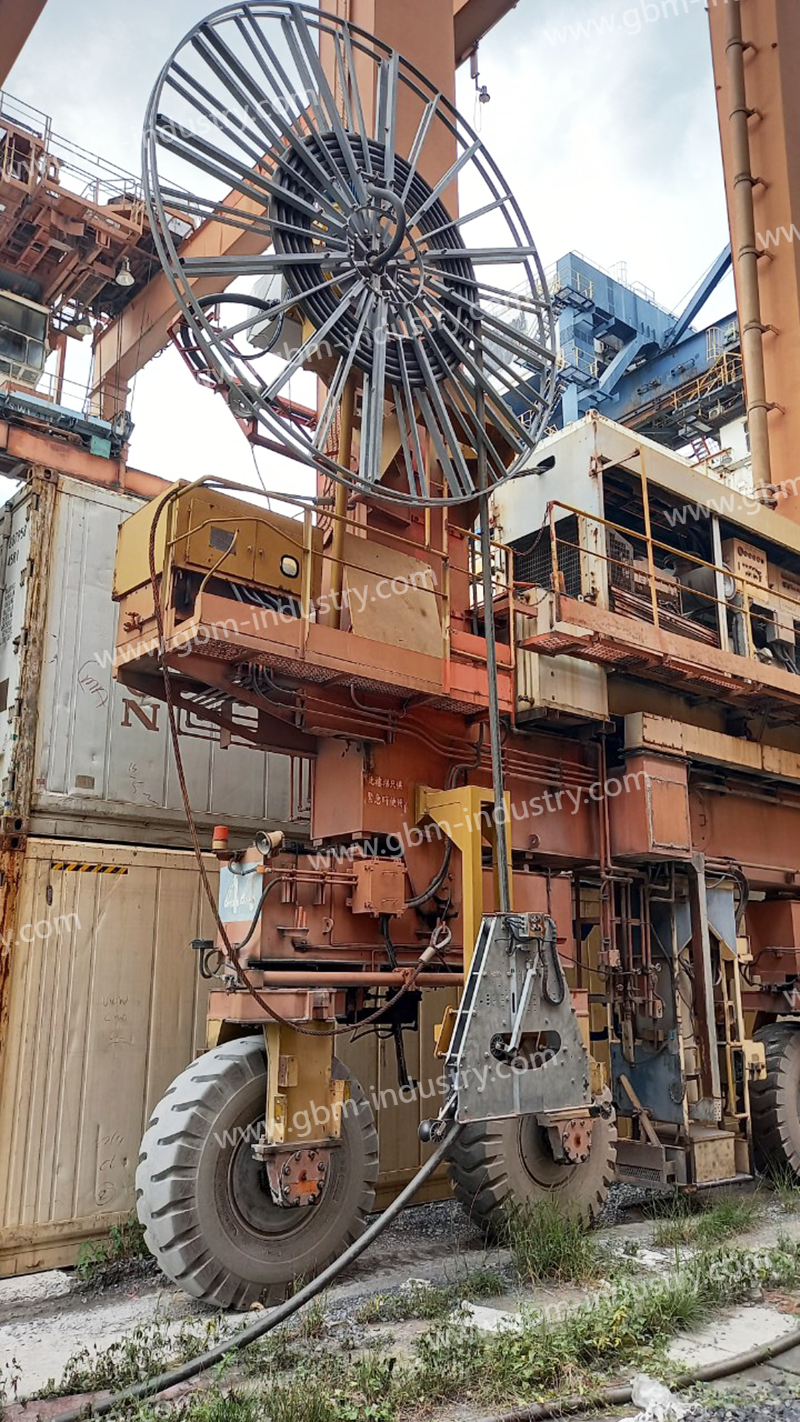
GBM support provide cable reel on RTG crane for good quality and minimal maintenance cost
RMG uses steel wheels, whose lifespan is essentially the same as that of the entire machine and does not require replacement. RTG main frames are driven and supported by rubber tyres, which require regular replacement at significant cost. Additionally, the main frame transmission uses chain drive, which also requires regular replacement. Tyres for wheel cranes are large engineering tyres. From the perspectives of usage conditions and lifespan, numerous factors influence the lifespan of engineering tyres, which can be summarized as environmental factors, human factors, and tyre structural quality factors. Although the heavy-duty tyres currently installed on the RTG meet the design-specified maximum load capacity of 360 kN, it cannot be denied that the self-weight of the RTG causes the tyres to remain under high pressure at all times. Especially during steering, the tyre tread rubber and carcass layers are subjected to extreme friction and distortion, while the drive wheels, as the powered wheels, bearing even greater impact. Which can easily lead to the inner and outer layers of the tyres peeling off and the formation of bulges, one of the main causes of tyre life reduction.
In addition, the shaking during operation and the anti-sway device of the lifting gear cause the entire machine to impact the tyres, especially the drive wheels, resulting in large alternating forces on the tyres in a short period of time and frequent changes in these forces, which accelerates tyre ageing and heat generation. This is another major factor affecting the service life of tyres on tyre cranes. Furthermore, due to the rise in crude oil prices and the increased global demand for engineering tyres, the current tyre production lines cannot meet market demand, leading to a rapid increase in engineering tyre prices. Although prices have slightly declined over the past year, they remain at approximately 30,000 yuan per tyre. According to experience data, if the tyres are in good condition and maintained properly, the average service life of gantry crane tyres is approximately 3 years (similar to the major overhaul interval of the gantry crane engine). The tyre consumption for one shift over 3 years is close to 260,000 yuan. If there are any quality issues or maintenance is not carried out promptly, the tyres may experience rapid wear, air leaks, bulges, or delamination. In such cases, the costs associated with tyres would be a staggering figure.
Work Efficiency
RMG must be positioned on the yard tracks, with a fixed location relative to the containers. This saves time when moving containers and allows the large and small vehicles to operate at higher speeds compared to RTG.RTGs cannot maintain a fixed position relative to containers on the yard when moving along lanes, and the large vehicles often drift off course, requiring experienced drivers to frequently perform hook rotation and vehicle realignment operations, which affects work efficiency. Additionally, the operational speed of RTGs is lower than that of RMG. Therefore, overall efficiency is relatively low.
Site Relocation Analysis
RMG has difficulty in relocation. Although most track crane technologies are now relatively mature, the possibility of malfunctions cannot be completely ruled out during operation. Therefore, at least two track cranes must be configured on a single track. Additionally, although arrangements can be made in yard layout, it is impossible to completely eliminate situations where multiple track cranes must operate simultaneously due to emergencies on the same track. Based on international experience, multiple track cranes are generally configured on the same track. RTGs, which can frequently change locations, do not have this issue. Therefore, RMG is not suitable for yards with short tracks and a large number of spans.
To enhance location flexibility, RMG can also adopt several yard layout schemes, which is also a research direction for RMG. Additionally, overseas there are schemes where a small-span track crane is configured within the span of a large-span RMG.
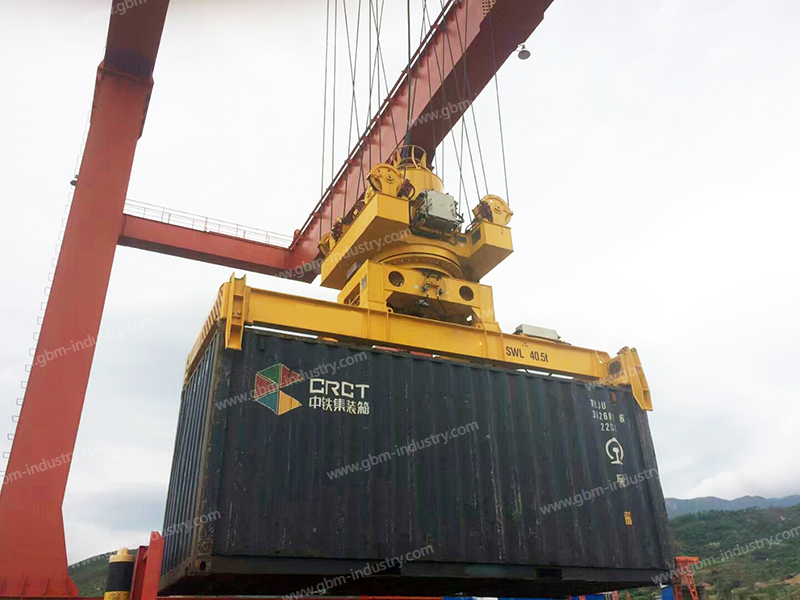
GBM RTG/ RMG crane container spreader customized with rotating function, ensuring best working flexibility
Safety and Environmental Protection
RMG operates on tracks and does not veer off course or collide with containers, while RTG frequently experiences veering of the main carriage. Even with collision limit switches installed, collisions with containers, trailers, or even mutual collisions cannot be completely avoided, posing safety hazards. RMG uses electricity, which is clean and pollution-free, while RTG uses diesel engines for power generation, producing significant pollution and noise, and requires the installation of relevant environmental protection equipment.
Conclusion
Through the comparative analysis of the five aspects of the two conventional container gantry cranes mentioned above, it can be seen that the advantages and disadvantages of the two types of equipment are quite distinct. Rail-mounted gantry cranes have high operating efficiency, good operating performance, are environmentally friendly and energy-saving, easy to achieve fully automated operation, low equipment failure rate, low equipment maintenance costs and low single container consumption costs. However, the foundation treatment is slightly more stringent ,and have fixed operating positions with limited flexibility. However, after the equipment is purchased and the yard infrastructure is in place, the daily maintenance costs and per-container consumption costs are significantly lower than those of rubber-tyred gantry cranes. Rubber-tyred gantry cranes, when used in container yards, offer high single-unit operational efficiency, flexible operating areas, the ability to concentrate multiple units for simultaneous operations, extensive domestic usage experience, lower foundation requirements, and lower equipment costs.
As a supplier of integrated port handling equipment, GBM actively participates in port construction, contributing to the development of China’s port industry and the prosperity of the logistics sector. With high-quality products, GBM serves as a strong contributor to market development.



